
MicroWeb EPB Wastewater Treatment Packaged
Equipment
User Manual
1. Introduction
MicroWeb EPB, based on conventional
biochemical treatment, it applies our proprietary MicroWeb technology to
strengthen the process and enhance the efficiency of the treatment.
MicroWeb EPB technology can be used in a wide
range of wastewater treatment, such as the wastewater from restaurant, hotel,
and clustered homes area etc. After the treatment, the rate of COD removal
reaches a high level of 90%, and COD, BOD, SS, pH meet the discharge standard.
MicroWeb EPB has the advantages of high
efficiency, easy operation, low operating and maintenance costs, less space
occupation.
2. MicroWeb EPB model types
MicroWeb MWR model types are shown as below:
EPB-01
That is: EPB-Number
Where:
Number --- stands for the capacity
per hour
Table 1 shows the model types of MicroWeb
EPB. If the type you required is not listed in, contact us please.
Table 1. EFB model types
| Model type
| Equipment
| Range
| Use case
| Estimated size (m2)
|
|
EPB-01
|
1. Oil interceptor
2. Buffer chamber
3. Mixer
4. Biochemical tank
5. Pulse device |
1±0.2t/h |
Wastewater from
restaurant, hotel, clustered homes, and beverage manufactory etc. |
16 |
| EPB-05 |
5±1t/h |
26 |
| EPB-15 |
15±3t/h |
59 |
| EPB-25 |
25±5t/h |
73 |
| EPB-50 |
50±10t/h |
183 |
3. The principle of MicroWeb EPB and the description of
equipment
The flowchart of MicroWeb EPB is as follows. It consists of
four or five parts: (1) Oil interceptor (used in treating the wastewater with
high oil content) (2) Buffer chamber (3) Mixer (4) Biochemical tank (5) Pulse
device.
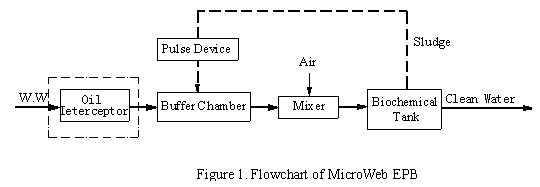
3-1. Oil interceptor
Oil interceptor is necessary to treat the wastewater with
high oil content, such as that come from restaurant, refinery etc. The sketch
map is shown as figure 2.
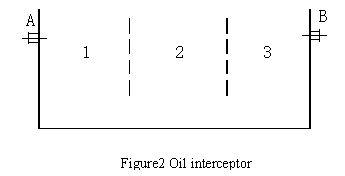
Wastewater comes into the oil interceptor through A. As the
wastewater flows to the effluent B, oil will separate from water and float up to
the surface, and most of it stops at the area 1 and 2. The treated wastewater
flows out through B. When the oil accumulated to the designed amount, take it
out with a vacuum pulp.
3-2. Buffer chamber
The sketch of buffer chamber is as figure 3.
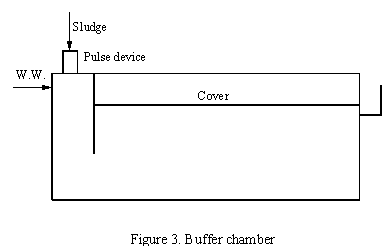
In the buffer chamber, the volume of wastewater is balanced
and the quality is adjusted. Moreover, all those kinds of hard-degrading organic
contaminants are broken up into small molecules; it benefits the following phase
biologic process.
3-3. Mixer
The sketch of mixer is as figure 4.
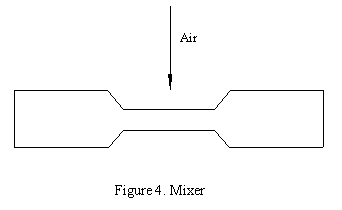
The wastewater is mixed with air via mixer so that there
are not needed to fix aerators in the bio-chemical tank. It reduces the
consumption of power.
3-4. Biochemical tank
The sketch map of biochemical tank is as figure 5.
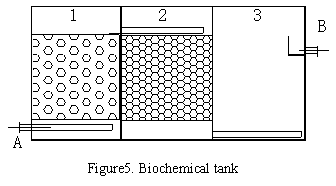
The biochemical tank consists of three areas. The first
part is the area filled with moving fillers; the wastewater carrying with the
air is distributed into the tank from the bottom. A net is fixed on the output
channel to prevent the fillers move out. In the second area, the fixed fillers
are loaded. The water, which comes from the first area, is distributed from the
top, and after go through the fillers, the water and the sludge flow into the
settling area. In there, the mixture of small flocs and water enters from the
bottom and, as it raises, it will be filtered with the sludge blanket formed
there before. As the flocs become large and heavy, they descend to the bottom of
the area and are transferred back into the buffer chamber.
3-5. Pulse Device
The sketch map of pulse device is as figure 6.
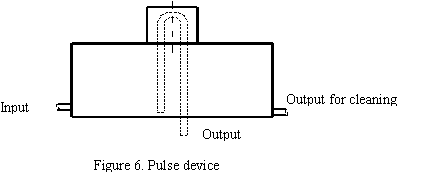
After sludge is put into the pulse device, it will be
discharged into the buffer chamber automatically as the designed time.
4. Bio-additive and chemicals
4-1.The addition and dosage of bio-additive
(1) Microcat
Microcat, which grows quickly and adapts outsider strongly, is used to start
the biochemical system in MicroWeb EPB. After the microbe matures and the system
goes smoothly, stop adding it, or to add it sometimes when it is necessary.
Microcat is a kind of solid powder. It can be add to the biochemical tank
directly. The dosage is 2-5 gram per ton of wastewater.
4-2.The preparation and dosage of chemicals
(1) PolyWeb P30
In preparing P30 Standard Solution, disperse P30 solid powder in 2000 times
its own weight of water. The P30 powder should be introduced gradually into
clean water (15~45OC) and dispersed for approx. 0.5 ~ 1 hr. at a
speed of between 20~80 RPM until a uniform dispersion is obtained. Normally the
solution can be stored for 3 days. Two tanks for diluting are recommended, so
that they can be alternatively operated.
The dosage of P30 should be 1.2~1.5ppm, that is, adding 2.4L~3L P30 solution
(0.05%) into one ton wastewater.
5. MICROWEB EPB operations
The flowchart of MicroWeb EPB-XX is shown as figure 7.
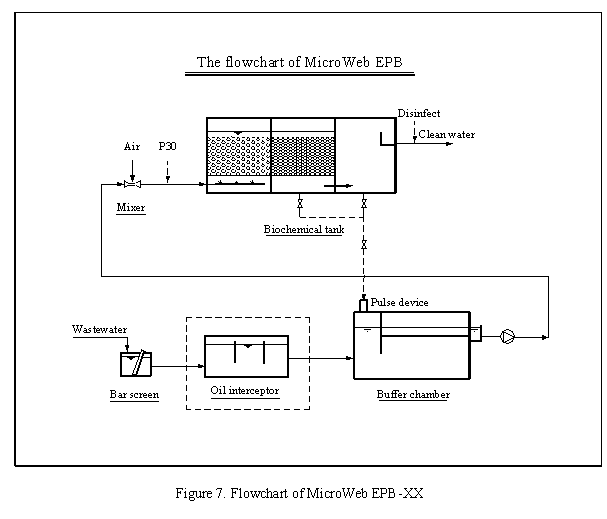
(1) Process of oil interceptor
The high oil content wastewater is designed to stay in oil interceptor for
about 40 minutes. When the thickness of oil reach the height of 10~20cm, pump
out the oil with a pump.
(2) The process of buffer chamber
The wastewater stays in buffer chamber for two hours. With the volume
balanced, the quality adjusted, and the organic degraded, the clear water on the
upper layer flow over the cover and then are pumped into the mixer.
(3) The process of biochemical tank
The wastewater is mixed with air in mixer. The water carrying with the air
enters the biochemical tank from the bottom. P30 is added in the first area of
the tank. Reacting time allocated to the three areas of biochemical tank is even
and one hour each. The sludge that settled down on the floor of area two and
three are discharged to the pulse device. The clean water that from area three
is discharged to outside.
6. MicroWeb EPB maintenance
1. The main joints and valves of EPB should be checked and cleaned periodically
to prevent block up. When not in operation, these parts need to be cleaned up
and get ready for the reuse.
2. Check the distributor located in biochemical tank regularly, in case of any
block.
3. EPB should be installed inside to ensure the bio-bacterial effectively during
the winter.
4. Pumps should not run without water.
7. MicroWeb EPB safety of operating
1. Make sure not touch the dangerous part when turn on or turn off the
electricity power.
2. Always wear gloves when handling of bio-additive and P30. Wash with plenty of
clean water and soap following any contact with these products.
© 2002, RE Water Solutions Inc.
Updated October 18, 2002






